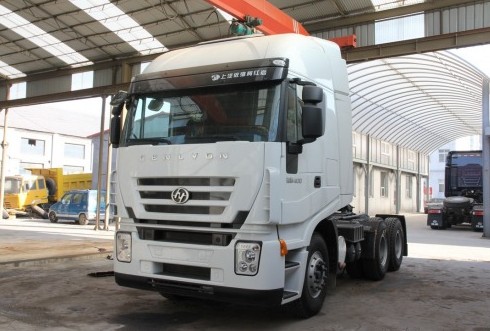As early as January 12 this year, Shanghai Automotive announced that it had implemented the separation of Shanghai Huizhong Automobile Manufacturing Co., Ltd., a wholly-owned subsidiary, and established Shanghai SAIC Commercial Vehicle Co., Ltd. (tentative name, hereinafter referred to as “SAIC Commercial Vehicleâ€). . The name, registered place and business scope of Shanghai Huizhong after its separation remained unchanged, and its registered capital was adjusted to 823 million yuan; the registered capital of the newly established company was 596 million yuan.

Among the domestic self-owned brands, heavy trucks, large passengers, light passengers, and light trucks have become the first breakthroughs for domestic auto groups. Taking heavy trucks as an example, domestic brands accounted for more than 98% of the total market share. In contrast to passenger cars, joint venture brands accounted for over 60% of the situation.
The entire product structure of SAIC is just the opposite of the above situation. Not only does the independent brand account for only a small share of the entire group's products. At the same time, passenger cars and commercial vehicles are also seen to be upside down, that is, breakthroughs have been made in self-owned passenger vehicles, while commercial vehicles are relatively quiet.
In 2010, the total sales volume of Shanghai Automotive Commercial Vehicles was 255,000 vehicles (including tractors and commercial vehicle chassis), which accounted for only 7.11% of the total vehicle sales. Compared with FAW and Dongfeng, the product structure of commercial vehicles is obviously short.
For this reason, SAIC has been continuously reviewing the product layout of commercial vehicles for many years. Among them, in 2006, they signed an agreement with Chongqing Hongyan to spend 500 million yuan to purchase shares and establish SAIC Iveco Hongyan. At the end of 2007, they signed an agreement with NAC, 2.095 billion yuan to acquire NAC, and accepted Nanjing Iveco.
However, over the past four years, the development of commercial vehicle segments has not kept pace with the country. In the field of heavy trucks, heavy trucks Huizhong already in a semi-shutdown state, until the end of 2010 to handle heavy truck; SAIC Iveco Hongyan 2010 sales of 30,500, from the first camp, heavy truck, liberation of the east, and the like, the gap was still significant .
In terms of light passengers, the development of Huisman Istaner has not always been satisfactory. Although Nanjing Iveco has maintained a good momentum of development, it still lags behind old rivals such as Jinbei and Jiangling Ford.
Therefore, it is not difficult to understand SAIC's move to acquire LDV in 2009. At the time of the financial crisis, when domestic automakers were targeting foreign passenger car assets, SAIC was all in the thought and it was nothing more than a stronger commercial vehicle segment, so that its growth engine was no longer Over-reliance on passenger cars.
Reducer Die Casting Parts,Aluminium Preasure Die Casting Parts,Aluminum Die Cast Parts,Reducer Die Casting Part
Ningbo Zongchi Machinery Technology Co., LTD , https://www.zcdiecastservice.com